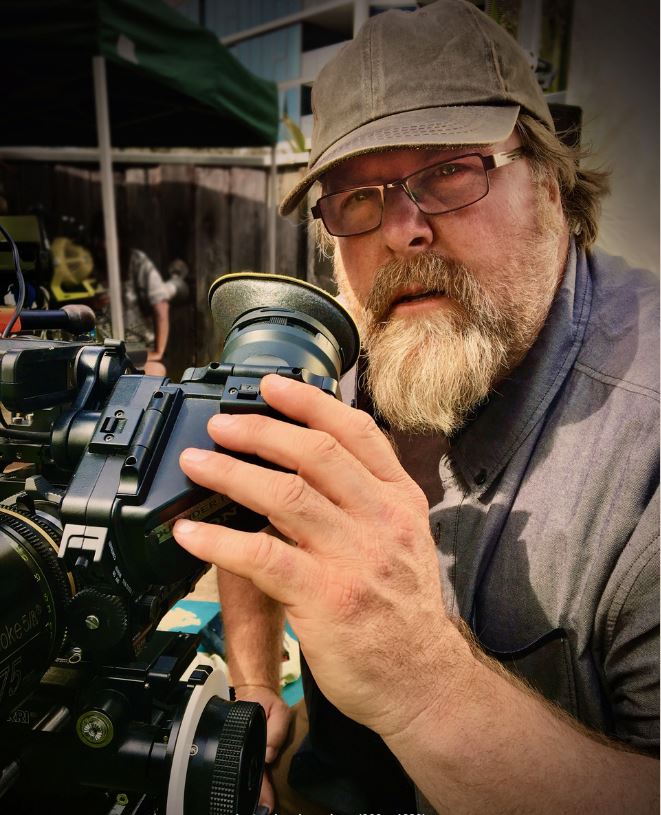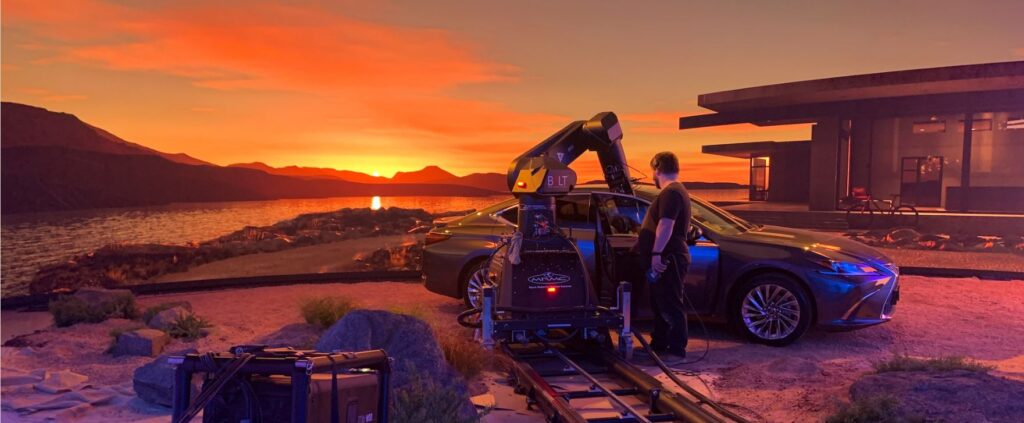April 13th, 2023Clayton’s story-telling dream

Words: Tony Sawrey | Images: Contributed
FILM director and producer Clayton Jacobson loves to tell a good story. And when he comes to the Central Highlands region to play double bass in the Duck Downpickers he can cultivate the emotional
connections of story telling with his audience.
Their music is old timey/Americana; irreverent and joyful, a perfect medium for
communicating tales directly from the heart.
We can often forget in these hyper-modern times the value of this ancient craft
and Clayton wants nothing more than to bring such an immediacy found in live
music to the medium of film. And his day job as CEO of Dreamscreen Australia is
helping to do just that.
Clayton is best known as director for his 2006 debut feature film Kenny starring
his brother Shane Jacobson, their dad Ron and himself as Kenny’s brother. But over
a professional career spanning 30 years he has worked in many areas of production
including the ever increasing use of computer graphics and green screen.
Computer graphics production workshops drive the film industry. From
superhero blockbusters down to commercials they provide the effects and scenery that
help maintain the illusion we hope to be immersed in.
Green screen backdrops on studio stages allow performers to perform roles placed
into those rendered virtual environments later on. The process is expensive, time
consuming and often difficult for actors to work with.
It is one of the many reasons that the film art form (especially at Hollywood
blockbuster level) has been criticised for losing its primary reason for existing; that of
a medium for telling stories.

As productions have become more and more complicated and expensive, simple
story telling has been buried beneath machinery and vast crews. Clayton, like many
creatives in the film industry, started thinking about alternatives. For him that turned
out to be the development of LED screens and virtual backdrops.
This is where highly detailed backgrounds, shot live or rendered on computer, can
be displayed as virtual scenery for actors to work in front of. It is a simplification of
the production process that is destined to take over the film and television industry
with the audience never noticing the difference.
“I first came to this sort of technology back in 2004,” says Clayton. “Later in
2009 I did an online web series called Mordy Koots with a gaming company called
Uber Soft. That was my first dip into this world of virtual backdrops and I could see
the potential, but still the quality of the gaming engine wasn’t quite there.”
The key advancement came around 2016 when gaming engines (processors that
live in a console allowing backgrounds in computer games to shift and change in real
time) were producing noticeably higher quality rendered environments.
At this point it was just a matter of projecting them on LED screens at larger
dimensions (they can be up to 12 metres high and 90 metres long) and since then the
take-up has been rapid.
Today there are over 200 LED Volumes (production stages) around the world
including Dreamscreen Australia’s 15×5 metre stage in Epping, Melbourne. And what
gave Clayton the time and motivation to turn his own Volume I stage into a reality
was the advent of Covid.
“When Covid hit I actually had a film I was about to make in Bulgaria with Guy
Pearce,” he says, “but that was blown out of the water and I could see that Covid was
going to be with us for a few years.
“So I decided to work on establishing Dreamscreen as a means to keep working
while the entire film industry was halted due to travel restrictions, lockdowns, limited
crews and social distancing.
“But I got so excited by this technology and getting the studio up and running
that I’ve been happy to walk away from directing etc to concentrate on this new
venture for now because I do believe this is the future of filmmaking.”
The new technology is set to catapult film and TV production through a
revolution as seismic as the adoption of CGI in the 1990s. Live backdrop productions
have created a disruption in the structure that normally dilutes the story teller’s
vision.
At the same time in Clayton’s view it is also a chance for those dreamers to
broaden the scope of their ideas and a vision to life with an immediacy normally out
of reach, something more like that a musician enjoys when interacting with their
audience.
“It is no coincidence,” says Clayton, “that one of the first phone calls I got when I
was talking publicly about Dreamscreen was from an Australian writer who does a lot
of television.
“He was saying: ‘Clay, I’m just so thrilled that you are doing this because it means
that I’m going to be able to dream bigger, I’m going to be able to offer up stories to
the networks that are on a larger scale and they won’t be cut down as easily due to
budget constraints’.”
Which brings us back to the Duck Downpickers and the satisfaction of telling a
story to an audience where the reactions and feedback are instant.
“I love it every time we play. We get to know the locals who come to watch. It is
something to look forward to.
“I can leave all the troubles of the day behind and put it all aside and unlike film,
the reaction from an audience is immediate, you get something almost immediately
compared to work in the film industry which takes days, weeks, months, even years.”










